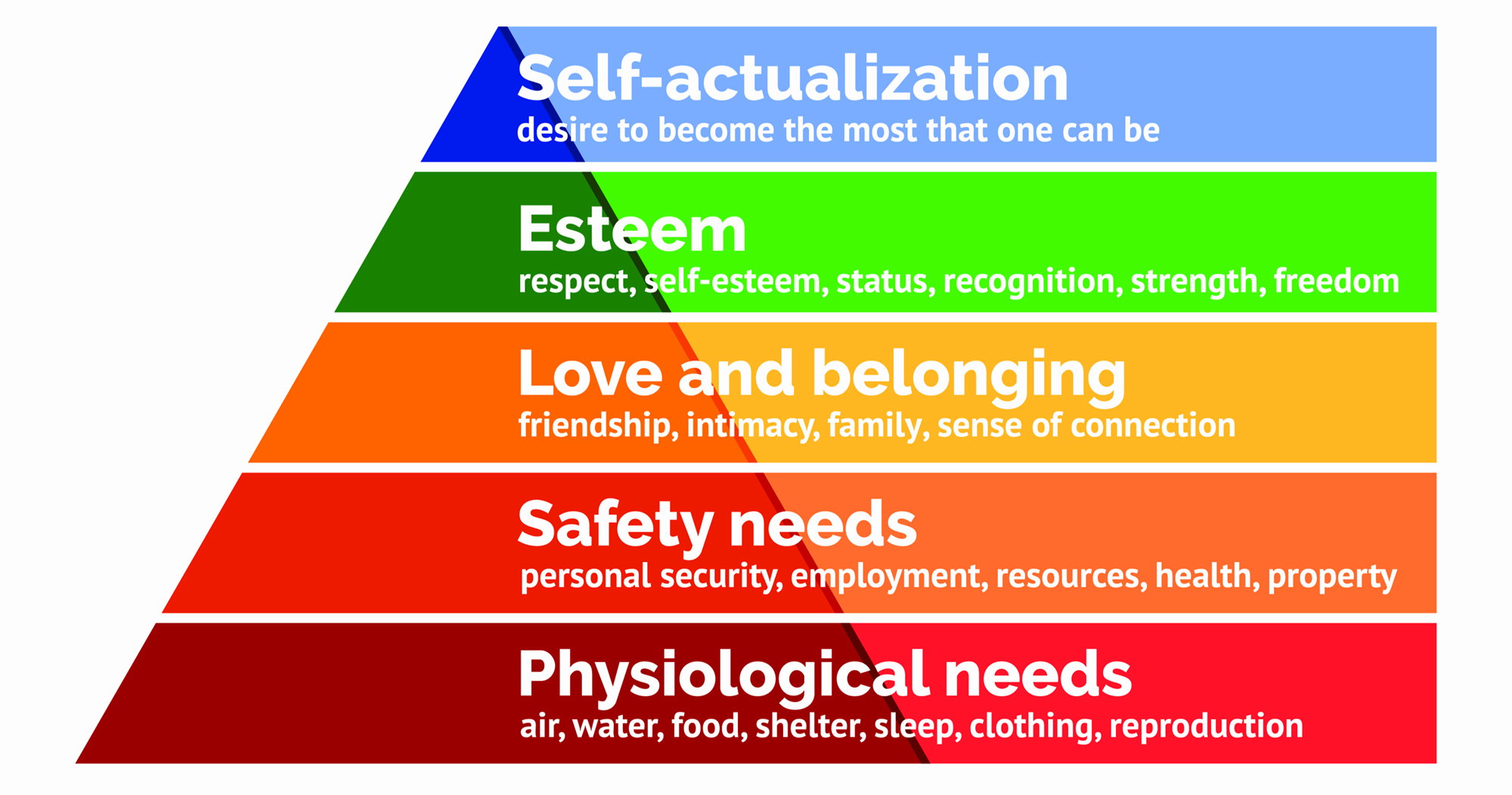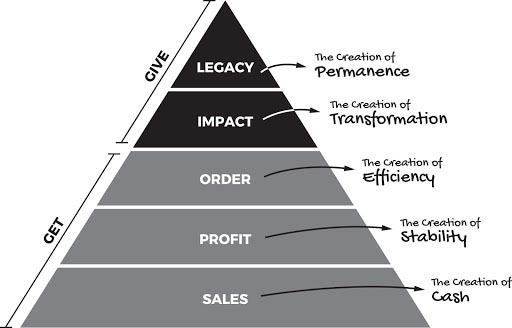In the book “Fix It Next”, Mike Michalowicz, the author of “Profit First”, “The Pumpkin Plan”, and “The Toilet Paper Entrepreneur,” introduces the concept of the Business Hierarchy of Needs.
“What I did is over five years I studied the Maslow Harkov needs and slowly translated it into how a business has a similar structure,” explains Michalowicz.
The Business Hierarchy of Needs is a framework for understanding the different levels of motivation that drive an entrepreneur to succeed. It helps you understand what drives your business and how it impacts you.
Through “Fix It Next”, Michalowicz argues that entrepreneurs need to identify what level they are at in the hierarchy before they can move up. He also stresses that it’s important to have a legacy, which means you’re looking beyond your own needs and wants.

A Review of Maslow’s Hierarchy of Needs
Maslow’s hierarchy of needs, also known as Maslow’s pyramid of needs, is a theory created by psychologist Abraham Maslow. It is often used to describe the steps that people take to meet their psychological needs.
“Maslow identified that human needs start off with the most basic level called physiological needs ultimately it climbs to the highest level which is self-actualization,” Michalowicz explains.
- The first level is the most basic need- food and shelter.
- The second level includes things like safety, security, and stability.
- The third level includes love and belonging.
- The fourth level is esteem- which includes things like respect from co-workers or clients or recognition for a job well done.
- Finally, at the top of Maslow’s Hierarchy of Needs is self-actualization – which includes things like creativity, humor, or finding fulfillment.

“What Maslow pointed out,” Michalowicz adds, “is that as needs arise our base level needs must be served first. Physiological needs are like breathing air or eating food. And higher-level needs like esteem or belonging to a community reside above that.”
Michalowicz then went on to paint a scenario to better illustrate Maslow’s Hierarchy of Needs in action. “Imagine you’re out to dinner with your best friend– that’s what Maslow would argue belonging you’re part of a community– and you’re eating a hamburger. And all of a sudden, you are choking.”
What do you suppose happens next?
“Well, all of a sudden we’ll revert– according to Maslow– to our base level need. It’s a biological response. We’ll try to get out of what’s causing us to choke. We’ll try to expel that food lodged in our throat. So even though we’re experiencing a belonging moment, we immediately revert to a base level of need if it’s not satisfied.”
Businesses Have a Hierarchy of Needs as Well
“That’s why I discovered about businesses,” Michalowicz continues. “Businesses have a base level of needs. And they aspire to higher-level needs, but if the base is not being addressed we automatically must revert to addressing it.”
The Business Hierarchy of Needs is based on the same principles as Mazlow’s Hierarchy of Needs, which replaces human needs with those of our businesses.

“The base-level need for businesses in the Business Hierarchy of Needs is Sales. Then it’s Profit. And above Profit is Order. (Then) the next two levels are Impact and Legacy,” Michalowicz enumerates.
When it comes to our businesses, we first need cash flow and sales in order to move up the hierarchy of needs. “Sales is the creation of cash. Every business needs an inflow of cash. If you have no money, you have no oxygen for (the) business.”
“The Profit level,” Michalowicz continues to explain, “is the creation of sustainability. For business to sustain, it must be able to retain cash.” These two base components ensure that sales are made and profits are increased before higher levels of need are met.
“But even these first two levels,” Michalowicz points out, “businesses get confused. If we equate this to Maslow’s this is like saying the business is freezing to death. And to warm up instead of putting insulation in the building around us, we’re going to start gasping for air. it’s not gonna serve us.”
What the Book “Fix It Next” Means for My Business
To correct something in your business, you need solid systems in place. “In the Business Hierarchy of Needs, you will master these five levels in identifying where a business resides at any given moment,” says Michalowicz.
The Business Hierarchy of Needs is a diagnostic tool to help you understand where you are in your business and what needs to be addressed. It is a way to organize your needs in order to achieve efficient and profitable business practices.
“Many businesses revert to sales when they actually need to focus on the insulation of profit,” Michalowicz explains.
“Think about building a house: if you want to build the third floor, you need to have the basement first and the second floor in place and strong in the beginning… you can’t start building the third floor. Yet some businesses start building the third floor without even considering the foundation. And the business collapses on itself.”
“Alternatively,” Michalowicz continues, “you can build a massive foundation– a big basement. And put a little toolshed on it. And it’ll be sucked up into the basement. S the structure needs to be able to support itself.”
That’s what the Business Hierarchy of Needs does. “You will build the foundation of Sales. And start building the structure of Profit above it. Order and so forth. And do it the right way for a business.”
A Final Word About The Business Hierarchy of Needs

In conclusion, the Business Hierarchy of Needs is a way to measure your own personal priorities in relation to the success of your business. Your ability to recognize and understand these needs will help you act accordingly as well as reach your full potential as a successful entrepreneur.
The Business Hierarchy of Needs is a fluid, living, breathing thing so it will change as your business evolves. It has a direct correlation to your ability to grow and expand in today’s marketplace.
If you want to learn more about the concepts behind “Fix It Next” and how it can work for you and your business, contact us at The Sum Of All Numbers right now. We partner with you to take the frustration out of understanding the numbers, so you can grow your business with confidence.
Sources:

